12 Ways To Add More Flavor To Tofu
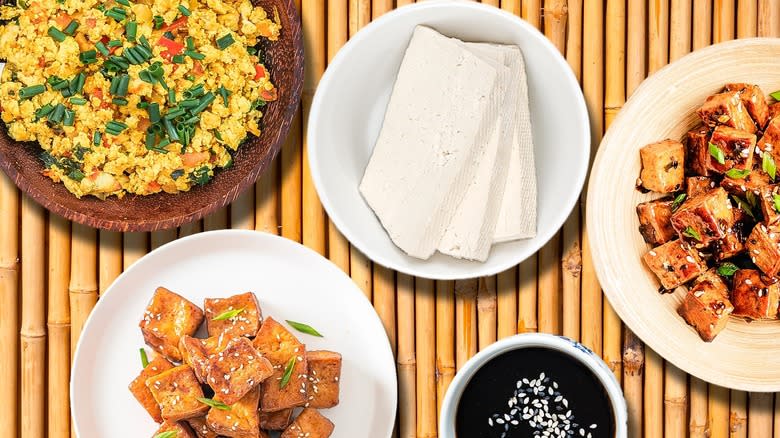
Those who cook tofu often know the versatility of this inexpensive plant-based powerhouse protein. Yet those unfamiliar with it may be quick to dismiss tofu's inherently bland flavor and sponge-like consistency. What they may not realize is that tofu is a blank slate and that the way to add flavor is by utilizing different techniques to prepare it and knowing how to incorporate it into many of the dishes you may already love to cook.
It helps to understand what tofu is and isn't. Tofu is made from soymilk that is heated, curdled, and pressed into a block. While that may not sound entirely appetizing, remember that this process isn't all that different from how cheese is made.
Many processed tofu products are designed to mimic the taste and texture of various foods, yet it's a mistake to always think of tofu as a meat substitute. Tofu is its own food and requires handling in the right way to take advantage of various flavorings, from curries to tacos to stir fries and traybakes. Instead of considering tofu as merely a meat substitute, consider it a food with limitless potential for flavor and adaptability.
Read more: 21 Delicious Ways To Use Up Leftover Rice
Press Tofu To Help It Absorb Flavor
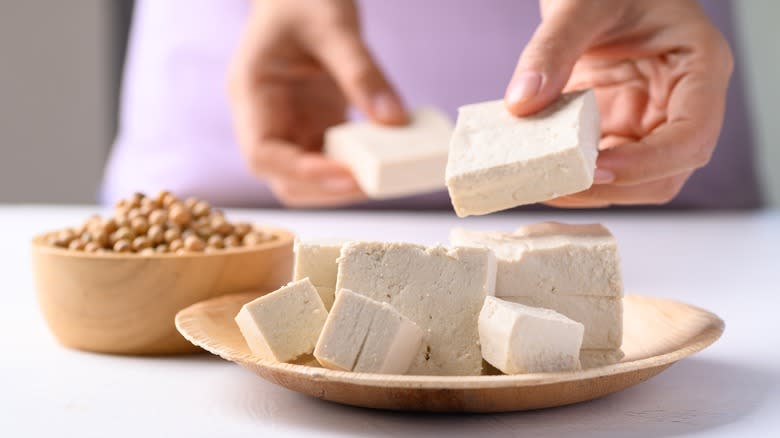
If you've bought and cooked firm tofu, you know it usually comes packed in a container with water. The water helps to keep the tofu moist and fresh. However, tofu is like a sponge and will absorb the water in the package. That's why an essential first step to flavoring tofu is to press it.
Removing water by pressing tofu will allow it to absorb flavor from marinades, sauces, and other flavors you might add. If the water isn't removed, the tofu lacks the ability to soak in flavor, and it will turn out bland and spongey. The exception to this is if you plan to cook tofu in a soup. Pressing tofu may seem like an extra step you don't have the time for. Yet, if you cook tofu often, it's a simple part of the cooking process that you can work into your routine. If you press your tofu as the first step to cooking, you can prep other ingredients in your recipe while you wait.
You don't need a fancy piece of equipment to press tofu. The easiest way is to wrap a block of tofu in a clean kitchen towel and place something heavy on top, such as a pan or a stack of plates. You can press the whole tofu block or cut it into slices. It doesn't have to take long, either. Pressing your tofu for just 30 minutes can result in a big difference in flavor.
Coat Tofu In Starch Before Cooking
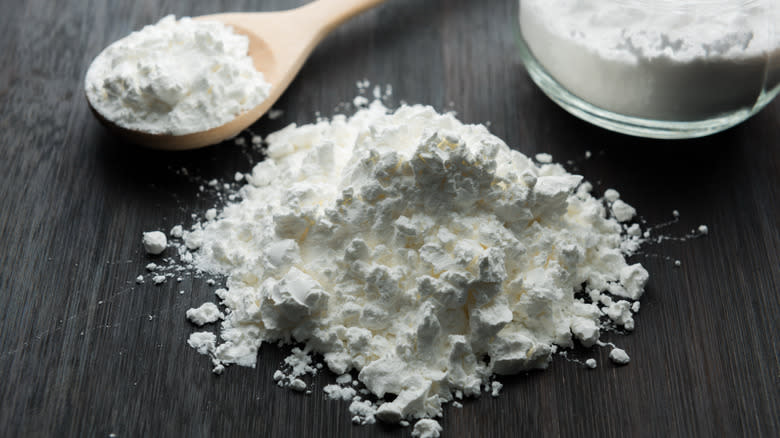
Sometimes, the best way to enhance the flavor of a food is to improve its mouthfeel. And when it comes to tofu, if the spongey texture is immediately offputting to you, it's easy to address this problem.
The answer is to dust tofu in starch such as corn starch, potato starch, tapioca starch, or even rice flour. After pressing your tofu and cutting it into cubes or slices, lightly toss it in a bowl with the starch of your choice before cooking. A thin coating is all it takes to help the tofu develop a slight exterior crispness. You will notice this the most when stir-frying, baking, or pan-frying tofu. Between pressing tofu and using starch, you can eliminate spongey textured tofu most people don't enjoy and create a result that tastes delicious.
If desired, you can add various dried herbs, spices, and salt to the bowl and starch for even more flavor for your tofu. This is best when you don't intend to toss the tofu in sauce, which can overpower seasoning in the starch.
Season Tofu More Than You Think

If you're used to cooking meat, poultry, and seafood, which all have their own natural flavors, it's important to remember that tofu does not have the same characteristics. When you understand that tofu doesn't have much in the way of inherent flavor, it becomes easier to remember that it truly needs to be well-seasoned to taste appealing to most people. It's why tofu tastes better in a restaurant than at home.
Unlike restaurants, home cooks tend to underseason and undersalt their food. But we know that tofu needs that extra boost of flavoring. Whether you're coating tofu in a starch, a marinade, or a sauce, don't shy away from using plenty of salt and seasonings. If using recipes originally written for other proteins, consider increasing the flavoring ingredients to ensure the tofu tastes good. Of course, one of the best ways to make that determination is to taste the tofu as you cook and adjust as needed.
Use A Marinade
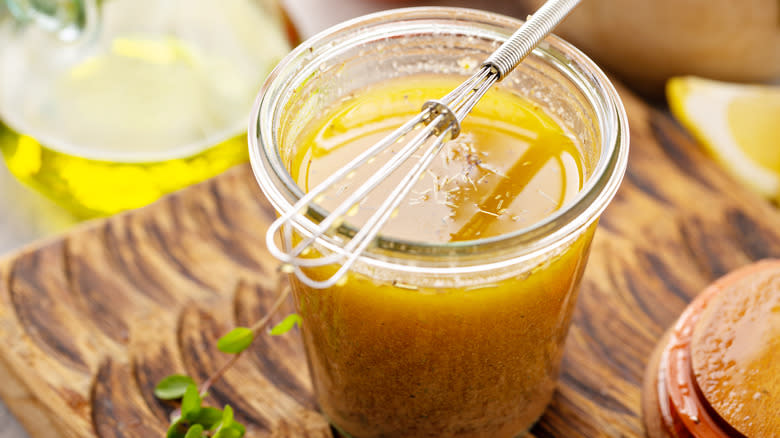
Although not a meat substitute, tofu does benefit from some treatments you'd more commonly use with meat, including marinating. Marinating is when you allow food to spend time in a liquid so that it has time to absorb flavor. Cut your tofu into the desired sized pieces and allow anywhere from a half hour to overnight for it to be spent in the marinade of your choice. Pressing the tofu in advance to release water will allow a marinade to be more easily absorbed.
When determining what kind of marinade to use with tofu, try something like this jerk-marinated tofu recipe. However, you do not need to find marinades that are specific to tofu. If you already have some favorite marinades you've used with other proteins, feel free to use them with tofu, too. A good marinade is made up of an acid, a fat, and flavorings, such as herbs and spices.
Toss It In A Sauce

There are few foods that aren't made better thanks to a good sauce, and tofu is no exception. Using a sauce to make more flavorful tofu dishes may be one of the easiest approaches because you likely already know how to make a few sauces you enjoy, and no tofu-specific skills are required to get started. A sauce quickly coats tofu in flavor and can also help prevent it from drying out.
Because of the versatility of tofu, virtually any sauce would go well with it. Whether you prefer the sweet and tangy notes of a teriyaki sauce or the creamy and spicy flavors of a coconut curry sauce, tofu can easily fit in and adapt to whatever type of cuisine you have in mind. For quicker cooking, consider using store-bought sauces to create everything from BBQ tofu to tofu tossed with tomato sauce and pasta.
Find Inspiration From Other Foods

There are certainly helpful tips and best practices to keep in mind when cooking tofu and making it flavorful. However, you don't always need to reinvent the wheel. Don't be afraid to look for ideas on flavoring tofu in other places, especially those not specific to vegetarian or vegan cooking.
For instance, many of these ingredients that will give steak marinade a flavor boost would also make sense to your tofu marinade. The suggestions for adding maple syrup and honey for sweetness or lemon juice for fresh citrus flavor are also good ideas for a tofu marinade.
Or, if you're wondering how to add more culturally diverse flavors to tofu, consider browsing recipes from around the world. Asian, Mediterranean, and Middle Eastern foods are good cultures to explore, as vegetarian dishes are often popular there. But don't limit yourself. Consider how or if you can replace other proteins in recipes with tofu. It won't make sense in every situation, but in many cases, tofu can make a decent substitution with some slight adjustments.
Roast Tofu For Tasty Caramelization

Caramelized tofu is the delicious result of effective cooking techniques and smart flavoring ingredients. Just as you can caramelize vegetables by roasting them in the oven, the same is possible for tofu.
Start by pressing your tofu to remove the water. Then, toss pressed tofu pieces in a marinade made with a combination of oil, soy sauce, sweetener, and other flavorings of your choosing, such as garlic and ginger. The sweetener is essential for the caramelization to occur.
After spending at least 30 minutes in the marinade, spread the tofu on a baking sheet in a single layer. Place in a 400 F oven for about 35 minutes or until crisp and browned to your liking. Flip it halfway during cooking for both sides to properly caramelize. You can then use the tofu in salads, grain bowls, stir-fries, and anywhere else you desire. For a one-pan meal, roast sliced vegetables, such as Brussels sprouts, carrots, or bell peppers, along with the tofu and serve over rice.
Try Deep Frying Your Tofu
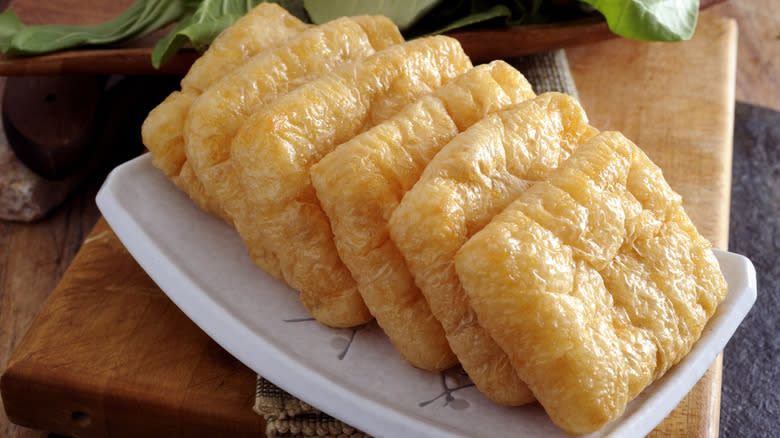
Deep-frying may not be the healthiest way to cook tofu, but it is one of the tastiest. There's a reason why deep-fried foods are so addicting and popular. That crunchy texture and well-seasoned coating create an explosion of flavor like few other foods can achieve. And if you particularly enjoy deep-fried takeout, such as chicken or seafood, you may be surprised to learn that you can recreate a similar experience with tofu.
These crispy tofu nuggets are a good place to start when experimenting with deep-fried tofu for the first time. The recipe has you dredge pieces of pressed tofu in flour, batter, and then breadcrumbs before dipping them in a pot of oil for frying. Flavor comes from garlic powder, salt, and pepper in the batter mixture, though it would be easy enough to add more seasonings. Maybe a bit of cayenne for some heat or dried rosemary for earthiness.
Freeze Tofu For Better Flavor Absorption

Out of all the tips you need for preparing tofu, freezing it may be the most unexpected way to add flavor. Freezing is a counterintuitive approach to cooking, yet doing so has a noticeable impact on the texture of tofu. It creates a chewier, denser result that better absorbs a sauce or marinade.
Because the water inside the tofu expands during freezing, it results in bigger air pockets after the tofu is defrosted and the water melts. Freezing makes the tofu spongier and more absorbent, no matter how you intend to flavor it. This is a good technique if you want a meatier texture.
To freeze tofu, start by draining the water from the package and wrap it well. Pop the block of tofu in the freezer for at least 12 hours, or if you don't intend to use it immediately, feel free to freeze it for up to six months. Defrost the tofu in the fridge when ready to use, then press and marinate as usual.
Incorporate Tofu Into Flavorful Dishes
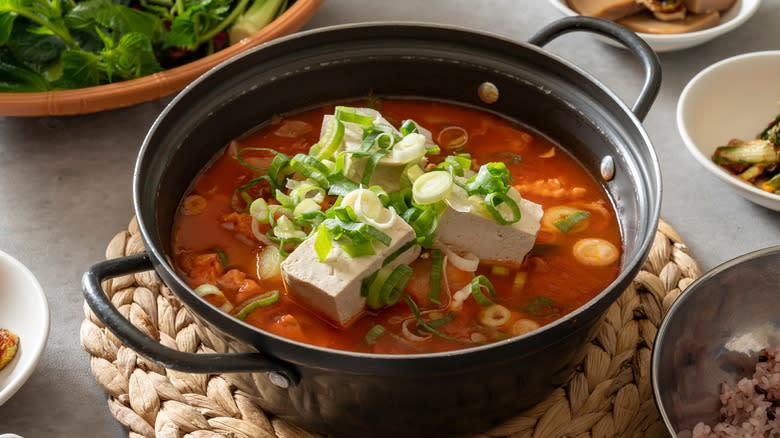
Instead of strictly thinking about what you can do to add flavor to tofu, consider adding tofu to dishes that are already full of flavor. In fact, this may be an easier approach since you don't have to focus on manipulating tofu to make it receptive to flavoring. This is a good approach if you're new to cooking tofu and don't mind if it's not the star of your meal.
Because tofu lacks much in the taste department, you want to seek out dishes that pack in the flavor. That way, there's no way the tofu can't taste good. This Kimchi Sundubu Jjigae, a Korean tofu stew recipe, is a great example. With a stew base made up of delicious ingredients like kimchi, gochujang, soy sauce, mushrooms, anchovies, sesame oil, and kelp, you don't have to worry if the tofu will have flavor. There's no question about it.
Create A Tofu Scramble

Tofu may not be the best at imitating meat, but it can serve as a respectable alternative to scrambled eggs with the right preparation. But it's not just the change in tofu's texture that makes this an interesting technique to try out, it's also all of the seasonings used to create the scramble.
To make a tofu scramble, you must first press out the water from a block of tofu. Then, using your hands or a fork, break it up into small pieces about the shape and size of scrambled eggs. Sauté some onion, peppers, or other vegetables you enjoy with scrambled eggs until tender before stirring in the crumbled tofu pieces.
Although nutritional yeast is a good way to replicate a cheesy and savor flavor reminiscent of scrambled eggs, there are other ways to make scrambled tofu with common kitchen staples. Stir turmeric, paprika, garlic powder, and soy sauce into your eggs and continue to cook. When just about done, you can stir in a little cream cheese for a touch of creaminess.
Pair Tofu With Sweet Ingredients
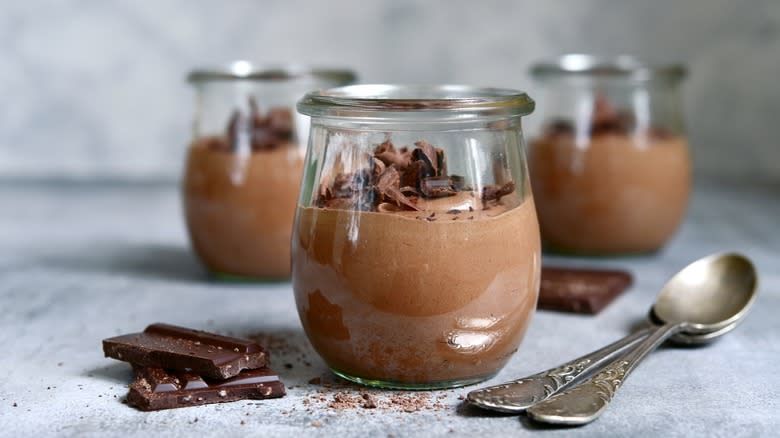
One way to meld flavor and tofu is with sweet, rather than savory, ingredients. Tofu isn't just a good choice for making protein-rich dinners; it can also be used to make creamy, dairy-free desserts and treats. Silken tofu that is easy to blend or whip is the best type for sweet applications. In these cases, the tofu is masked by the flavors of the other ingredients.
For instance, try blending frozen fruit with tofu and your favorite smoothie ingredients. You won't even notice that tofu is in the smoothie. This is a good way to still get the health benefits of eating tofu without tasting or noticing its presence.
Because silken tofu can be whipped up into a light and airy confection, it makes an excellent component of mousse. This chocolate caramel tofu mousse recipe is flavored with cocoa powder, dark chocolate, and a homemade caramel sauce. Has tofu ever tasted so good?
Read the original article on Tasting Table.

